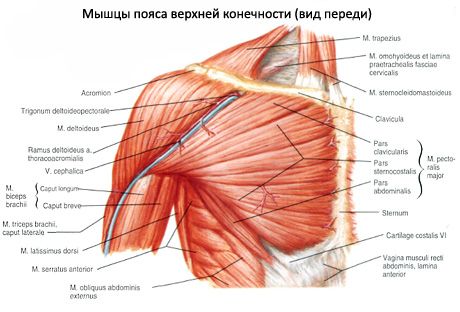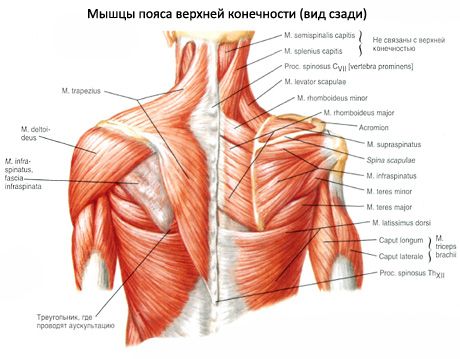Medical expert of the article
New publications
Deltoid muscle
Last reviewed: 07.07.2025

All iLive content is medically reviewed or fact checked to ensure as much factual accuracy as possible.
We have strict sourcing guidelines and only link to reputable media sites, academic research institutions and, whenever possible, medically peer reviewed studies. Note that the numbers in parentheses ([1], [2], etc.) are clickable links to these studies.
If you feel that any of our content is inaccurate, out-of-date, or otherwise questionable, please select it and press Ctrl + Enter.
The deltoid muscle (m.deltoideus) is located superficially, directly under the skin, covers the shoulder joint from the lateral side, from the front, from above and from behind, forms the characteristic roundness of the shoulder). This muscle is separated from the pectoralis major by the deltoid-pectoral groove (sulcus deltoideopectoralis). The deltoid muscle has a pennate structure and an extensive origin. It begins on the anterior edge of the lateral third of the clavicle, the outer edge of the acromion, on the spine of the scapula and the adjacent part of the infraspinatus fascia. Accordingly, three parts of the deltoid muscle are distinguished: clavicular, acromial and scapular. The bundles of all three parts of the muscle converge on the outer surface of the humerus and are attached to the deltoid tuberosity.

The different arrangement of the muscle bundles of individual parts of the deltoid muscle in relation to the shoulder joint, their different lengths and method of attachment to the humerus also determine the different directions of action of their force.

Under the deltoid muscle, between the deep plate of its fascia and the greater tubercle of the humerus, there is a synovial subdeltoid bursa (bursa subdeltoidea).
Function of the deltoid muscle: individual parts of the muscle, as well as the entire muscle, can contract. The anterior (clavicular) part of the muscle flexes the shoulder, simultaneously rotating it inward, and lowers the raised arm down. The posterior (scapular) part extends the shoulder, simultaneously rotating it outward, and lowers the raised arm down. The middle (acromial) part of the muscle abducts the arm. When the entire muscle contracts, it abducts the arm up to 70°.
Innervation of the deltoid muscle: axillary nerve (CV-CVI).
Blood supply of the deltoid muscle: posterior circumhumeral artery, thoracoacromial artery.
Where does it hurt?
How to examine?


 [
[